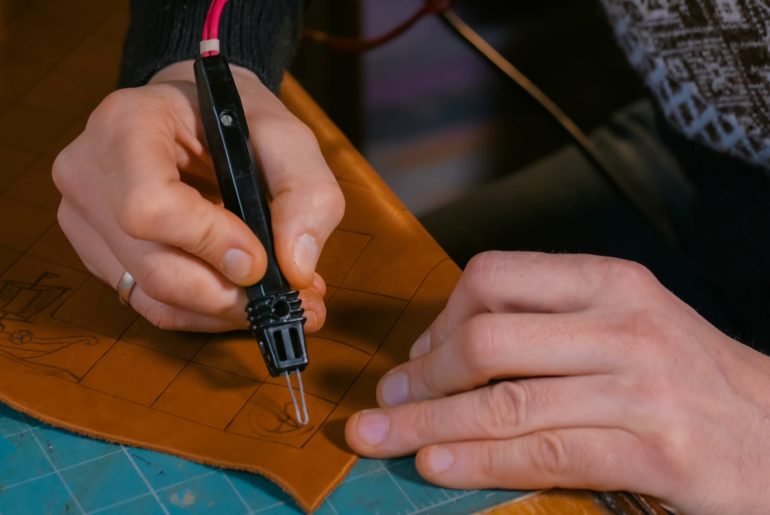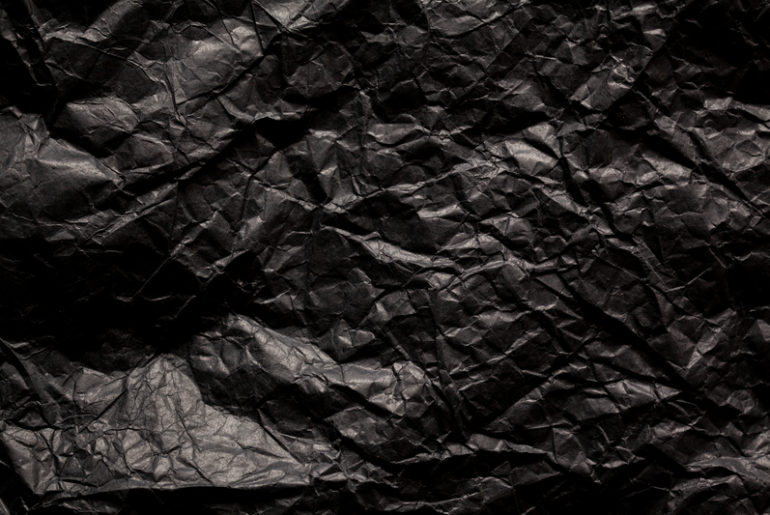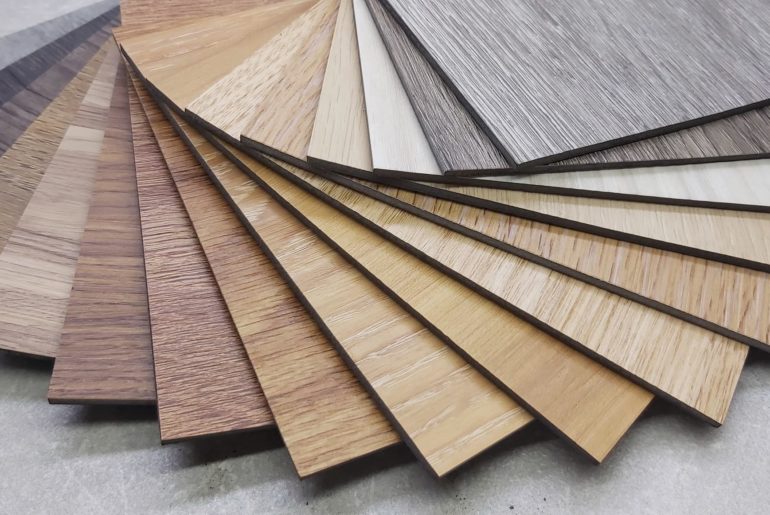Wood burning, also known as pyrography, comes from the combination of words in Greek: “pyro” for fire and “graphy’ for writing. It is the art of creating images or writing on a wooden support using a heat pen, so literally burning the wood. The parts that are touched by the wood burning pen become a dark color that creates an interesting contrast with the original color of the wood.
Wood burning is one of the most popular crafts at the moment. But, what is the perfect wood burning temperature? And what measures can you take to reduce the risk of getting burnt?
Depending on the type of wood you’re using for your wood burning project, you may need to adjust the temperature of your pyrography pen. In the same way, you will need to adapt your speed to the temperature you’re working with.
But, the question we get more often is at what temperature does wood burn? Well, there is maybe an even more important aspect to consider. The fact is that different types of wood burn at different temperatures. Softwood will burn faster, while harder wood will require more time to burn. You really need to know the characteristics of the wood you’re using to get the best results and a professional look.
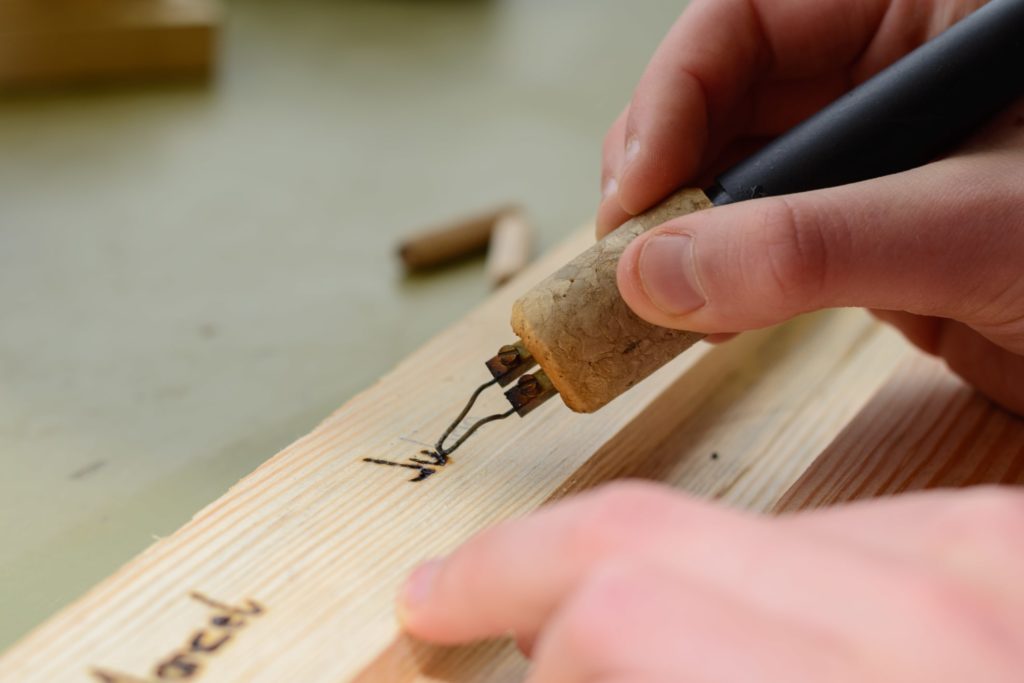
Wood burning temperature
Wood burns at different temperatures depending on how hard or soft it is. The moisture they held is another factor that may condition the temperature at which wood burns.
Among the popular types of wood used for wood burning, we should mention basswood. This softwood has a low density making it quite an easy option for pyrography. But, its qualities make it also a type of wood that burns faster, forcing you to adapt your seed and ideally the temperature you’re working on.
Harder and denser wood like maple will burn slower so you may need to work with higher temperatures or slower hand pace to get the desired results.
What temperature does wood burn?
If you’re wondering what temp does wood burn, we have the answer you need.
Most wood will burn from 750 to 1050 degrees Fahrenheit, which is equivalent to 400 to 565 in Celsius
Most of the wood you will be using in your wood burning projects will burn at a temperature that goes from 750 to 1050 degrees Fahrenheit, which is equivalent to 400 to 565 in Celsius. Obviously, we don’t want to char the wood or be left with ashes, so we are not planning to fully burn down our piece of wood.
While a tip set on a cool temperature may still make decent lines on wood like basswood, it may do nothing on harder wood like oak. We have already mentioned that different types of wood burn at different temperatures, but even the same kind of wood may require different temperatures to burn, depending on the moisture it holds.
We always talk about wood, but the same considerations about the required temperature apply to other materials, like leather (which requires low temperature and gentle touch) or bone (which would need the highest possible temperature).
The best temperature for wood burning
Deciding what’s the best wood burning temperature for your project means you’re familiar with the characteristics of the wood you’re using, and the requirements of your design.
Most wood burning pens work at temperatures around 600 degrees Fahrenheit. But the ones that let you adjust the temperature may go from 500 to 900, which allows you to decide what’s best for your wood burning project.
When it comes to choosing one pen or another will depend on your level of expertise and what are your goals, is this a hobby or you’re taking it more seriously? What types of wood burning patterns are you going to be creating?
Another aspect to consider when deciding at what temperature does wood burn is the room you’re working in. If the room is cold or there is a breeze you will need to set your wood burning pen at a hotter temperature.
When setting the temperature of your pen, you also need to keep in mind the tips you’re going to use. Not only you have to attach them correctly (if they end up getting loose, you will have to set your temperature higher), but you also need to make sure they are clean. Dirty tips will not heat up as well, as you will be required to set your pen at a higher temperature.
Talking about the tips, thinner and light tips will work well at a lower temperature. But, thicker tips, like the ones used for patterns or shading, may require more time to heat up and to be hotter to work well.
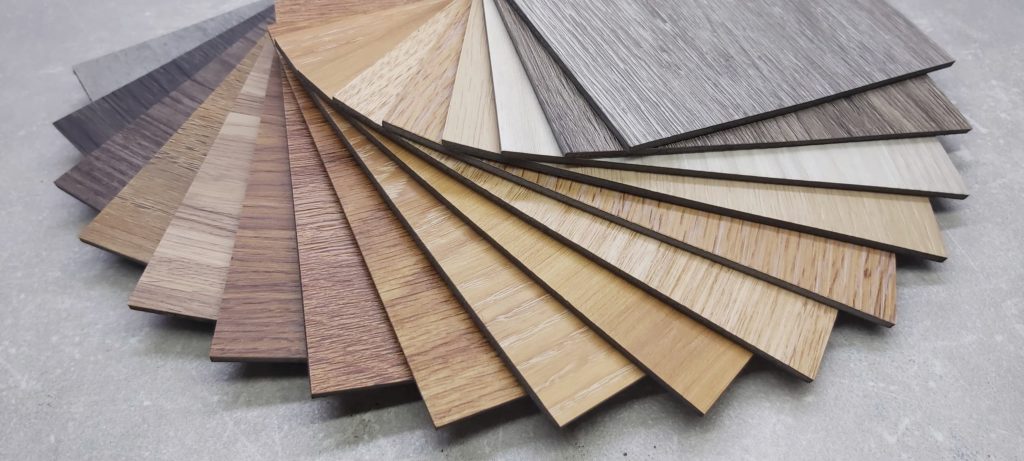
Choosing the right wood burning pen
- Solid point burner
- Wire nib burners
- Wood burning station
Your wood burning pen is the most important tool if you’re interested in pyrography. There are many different models and brands, as well as different styles. Some allow you to change the temperature to adapt it to what’s best for your project, others help you work faster by avoiding changing tips.
So, how do you choose the best pen for you?
First of all, it would be a good idea to give the following questions thought to be able to choose the best wood burning pen for you.
Do you need to be able to change the temperature? What is your level of expertise and what are your technical skills regarding wood burning? Will you be changing tips often?
Solid point burner
This is the cheapest option when it comes to wood burning pens. The tips are usually screwed in and come in different sizes.
Solid point burners work by creating heat within the pen and sending it to the tip. They usually work at a fixed temperature.
You have to care for your pen by making sure you can tighten the tips by hand. Making too much pressure may end up in a broken tip being stuck in the wood burner, which can eventually ruin your pen.
Among the advantages of this type of pen, there is the fact that is cheap, they are quite ergonomic, and easy to use, which makes them great for beginners.
However, while cheaper and easy to use, solid point burners have some disadvantages. The main one is that tips may become extremely hot, leading to breakage or loosening of the tips. Also, it requires quite a lot of time to heat up and cool down.
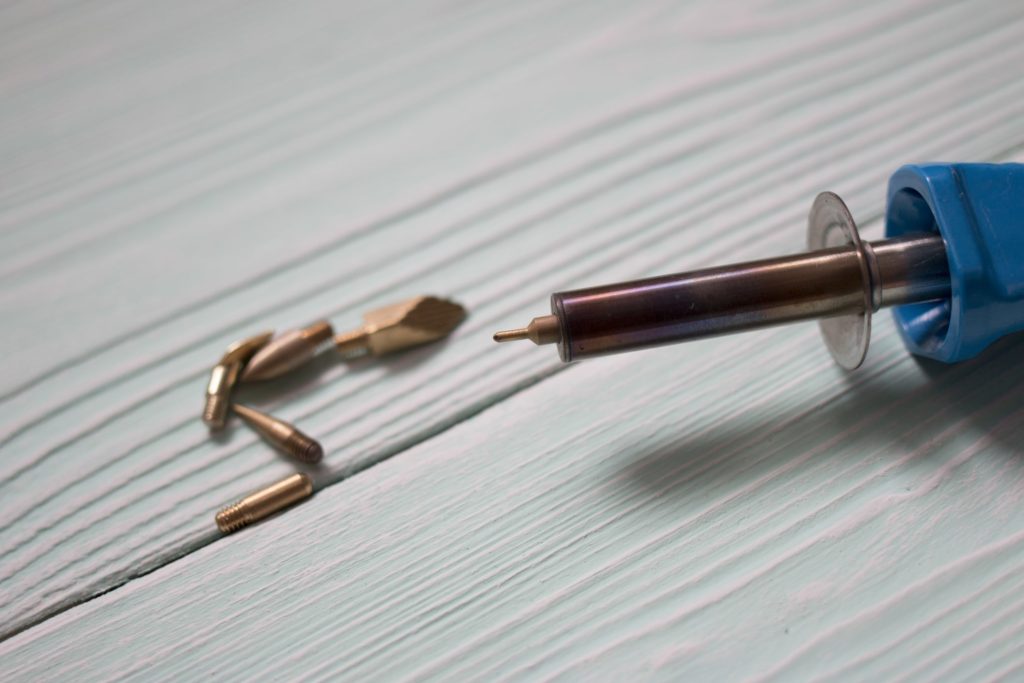
Wire nib burners
These pens are without a doubt the favorite among wood burner aficionados and professionals.
They can be easily personalized with tips of all sorts, and you can also change the temperature, which is a big plus compared to the solid point burners.
These pens also feature a thinner body that makes them ideal for details or writing. As well, they heat up and cool down faster than the solid point burners, making your work more flexible and dynamic.
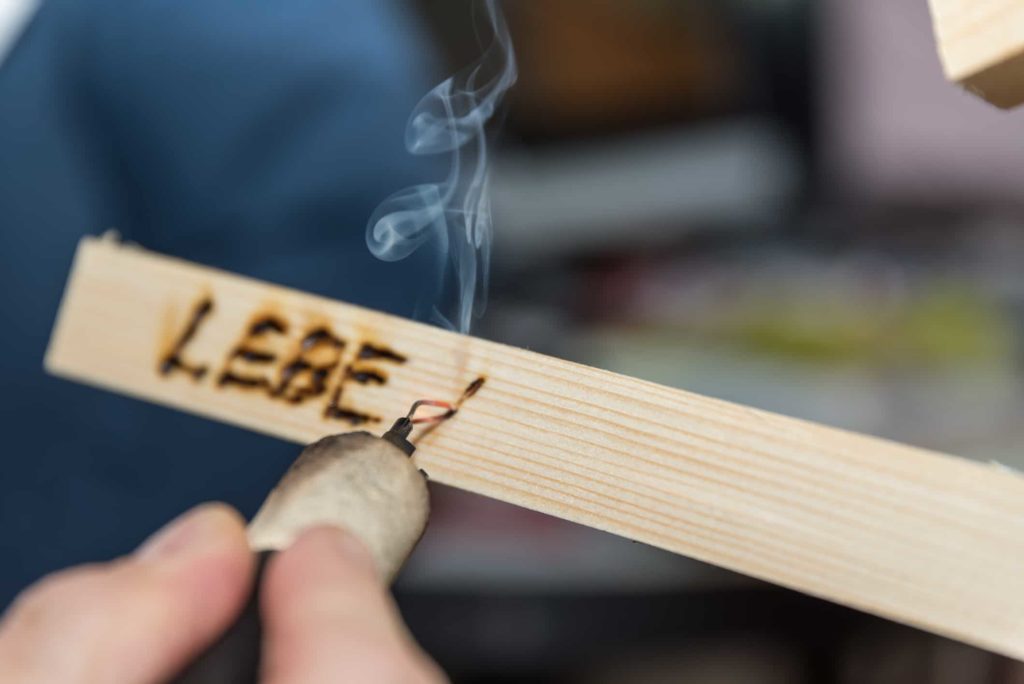
Wood burning station
A wood burning station helps us control the temperature. We can attach the pen but this type of pen is rather different than the last one. Instead of changing the tips, we change the whole handle, avoiding the problem of having to wait until the pen is cool to change them.
We can also set the heat at different temperatures, so while losing some flexibility on the many tips available for slid point burners, we gain more control over how we are burning.
Obviously, this is a more expensive option, but maybe more ideal for advanced hobbyists.
Wood burning safety measures
- Avoid treated wood
- Use your pen with care
- Avoid inhaling toxic fumes or fine dust
Finally, we are going to mention a few tips and recommendations to work with wood burning in a safe manner.
While working with a tool that gets extremely hot (wood burning temperature is quite high), you can imagine that there is a risk of getting burnt and we want to avoid this at all costs.
All wood burning pens come with a holder that allows you to pose the pen when you’re not using it. This way you can avoid burning any surfaces you’re working on and it’s easy to grab to continue working.
It’s very important to always avoid treated wood. The fumes that it may emit can be toxic and you will end up risking your health. It’s better to use natural raw wood for all your pyrography projects. Avoid staining and painting before you burn too.
In the same line, avoid burning over glue lines or epoxy.
Most of the safety measures regard the smoke that is produced by the wood burning process. It’s recommended to stay a bit away while working and not lay on top of the wood, or even wearing a mask could help reduce the amount of smoke that you end up inhaling (though the efficacy of mask is a debate among wood burners due to the fine dust produced).
Obviously, a little bit of smoke is normal, but wood burning shouldn’t produce much smoke or dark for that matter. If so, it may mean that your pen is too hot and it’s better to adjust the temperature. Opening a window and working in a ventilated room can also help.
Finally, the last piece of advice regards avoiding getting burn with your pen. Always wait the necessary time to cool down your pen when changing tips. And make sure you’re working in a clean table and there are no flammable items around.

